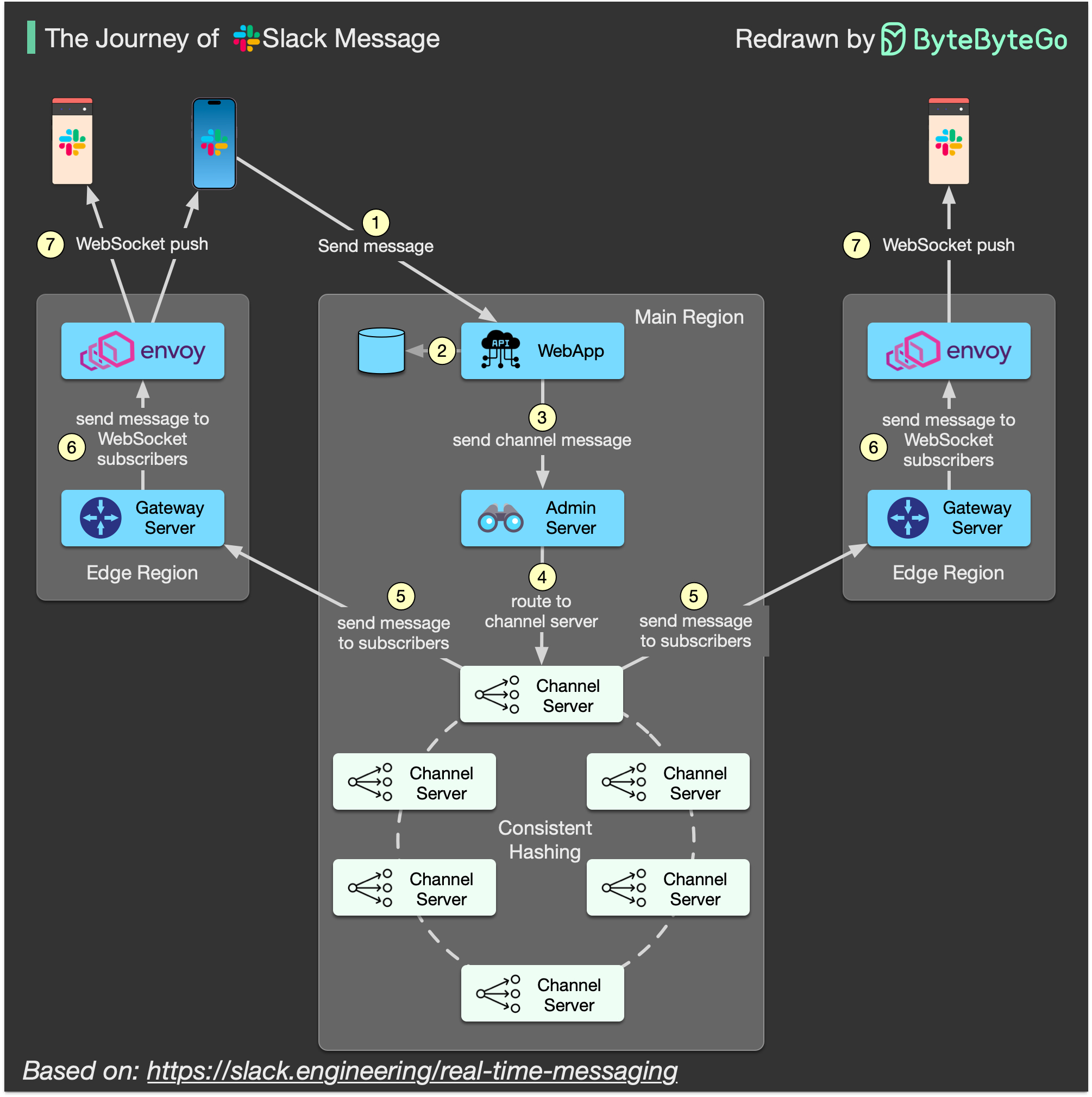Explore the journey of a Slack message from sender to receiver.

In a recent technical article, Slack explains how its real-time messaging framework works. Here is my short summary:
A Slack message travels through five important servers:
WebApp: defines the API that a Slack client could use
Admin Server (AS): finds the correct Channel Server using channel ID
Channel Server (CS): maintains the history of message channel
Gateway Server (GS): deployed in each geographic region. Maintain WebSocket channel subscription
Envoy: service proxy for cloud-native applications
Because there are too many channels, the Channel Server (CS) uses consistent hashing to allocate millions of channels to many channel servers.
Slack messages are delivered through WebApp and Admin Server to the correct Channel Server.
Through Gate Server and Envoy (a proxy), the Channel Server will push messages to message receivers.
Message receivers use WebSocket, which is a bi-directional messaging mechanism, so they are able to receive updates in real-time.